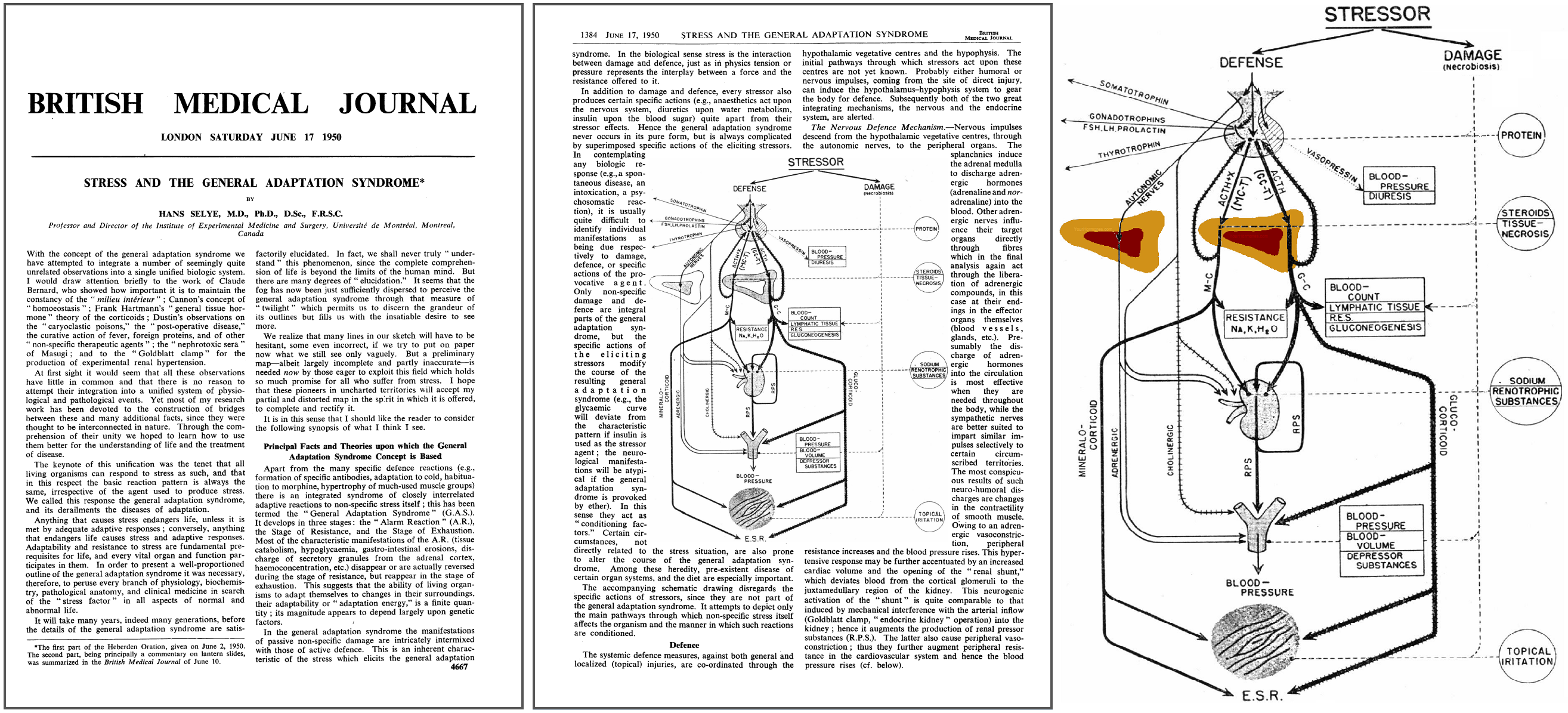
It's Not Just Adrenal Fatigue
The previous article discussed the adrenal glands, and introduced us to the topic of "adrenal fatigue" and fatigue disorders. However, one of the first things that experienced clinicians realize when they are treating patients with fatigue disorders is that it’s not just the adrenal glands. We quickly realize that there is multiple system involvement in stress & fatigue disorders. It is not uncommon for patients who have signs of adrenal fatigue accompanied by symptoms of poor thyroid function, and decreased function of sex hormones as their thyroid and gonadal systems become fatigued. In addition, we often see these patients start to shows signs of multiple chemical sensitivity and allergies as their detoxification system and immune system become fatigued. Patients become hypoglycemic or develop diabetes as their glucose-insulin-system fails to function properly. Their appetite and metabolism becomes abnormal as their ghrelin-leptin-adiponectin system becomes unstable. And the list of symptoms and fatigued symptoms goes on and on.
During the original research on stress and adaptation Dr. Hans Selye, a Canadian endocrinologist first revealed that many systems were involved in the stress response. In 1950, Dr. Hans Selye pointed out that the consequence of excessive stress is the “Generalized Adaption Syndrome”. What was first described as Generalized Adaptation Syndrome is now being called by the less accurate term "adrenal fatigue", which implies that the condition is not generalized, and unfortunately infers that it only involves the adrenal glands. While the adrenal glands do play a major role in responding to the demands of stress, the adrenal glands are not the only part of the body affected by stress. This generalized response actually affects many systems in the body, as shown in the illustration and discussed in the 1950 article titled "Stress and the Generalized Adaptation Syndrome". The systems discussed in that article include:
Adrenal
Gonadal
Thyroid
Nervous System
Inflammation
Glucose
Catecholamines (neurotransmitters)
Kidney/Fluid
Liver
Cellular/Tissue Response
Blood Chemistry (oxidative stress)
Digestion/ Appetite
We now understand that these systems that were first recognized as being affected by stress are actually systems that help regulate the functions of the body by maintaining homeostasis. Homeostasis regulatory systems maintain a stable, relatively constant equilibrium in the internal environment.
Keep in mind, that some of these homeostasis regulatory systems have only recently been clearly defined. Even though the hypothalamic-pituitary-adrenal (HPA) axis and the sympatho-adrenomedullary system (SAS) of the adrenal gland have both been studied for decades, the grehlin-leptin-adiponecin system is only recently defined.
These homeostasis regulatory systems include:
- Hypothalamic-Pituitary-Adrenocortical (HPA) axis
- Sympatho-Adrenomedullary System (SAS)
- Hypothalamic-Pituitary-Gonadal (HPG) axis
- Hypothalamic-Pituitary-Thyroid (HPT) axis
- Neuro-Endocrine-Immune (NEI) system
- Glucose-Insulin System (GIS)
- Brain Monoaminergic System (BMS)
- Renin-Angiotensin-Aldosterone System (RAAS)
- Hepatic Detoxification System (HDS)
- Cellular Signaling Systems (CSS)
- REDuction-OXidation System (REDOX)
- Ghrelin-Leptin-Adiponectin System (GLAS)
As noted in the page about the adrenal glands, the two regulatory systems that involve the adrenal glands are the Hypothalamic-Pituitary-Adrenocortical (HPA) axis & the Sympatho-Adrenomedullary System (SAS). These two systems typically are the first to respond to stress, and the last systems to becomes fatigued. However, all of the other homeostasis regulatory systems also respond to stress. The stress response of these additional systems is typically a secondary response that takes place after the two regulatory systems that involve the adrenal glands have already responded to stress.
Notably, the two components of the adrenal gland, the Hypothalamic-Pituitary-Adrenocortical (HPA) axis & the Sympatho-Adrenomedullary System (SAS) are typically the first systems to respond to stress.
In addition, the two components of the adrenal gland, the Hypothalamic-Pituitary-Adrenocortical (HPA) axis & the Sympatho-Adrenomedullary System (SAS) are typically the last systems to become fatigued due to chronic stress.
Keep in mind that we are always dealing with multiple homeostasis regulatory systems becoming fatigued, which was first described as the Generalized Adaption Syndrome. AdrenoMend™ is a Hormone Specific Formulation™ that was formulated to support the function of every homeostasis regulatory system. Learn more about AdrenoMend™.
As noted, what was first described as Generalized Adaptation Syndrome is now being called by the more popularized term "adrenal fatigue”. Since the Generalized Adaptation Syndrome is "Generalized", the words "adrenal fatigue” do not convey the full extent of the effect that stress has on the body. However, the term "adrenal fatigue” has been so popularized that it is at this time a required term when discussing the stress response, and trying to explain the stress response to people who are not familiar with Generalized Adaptation Syndrome.
While contemporary language requires us to use the term “adrenal fatigue”, we must continue to remember that the Generalized Adaptation Syndrome is not just "adrenal fatigue".
Next: Learn more about Homeostasis Regulatory Systems
